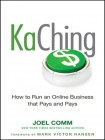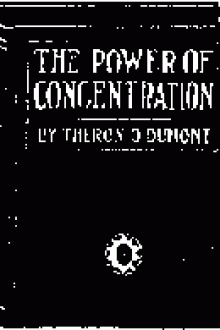KaChing: How to Run an Online Business that Pays and Pays Comm, Joel (books for 8th graders txt) 📖

Book online «KaChing: How to Run an Online Business that Pays and Pays Comm, Joel (books for 8th graders txt) 📖». Author Comm, Joel
ONLINE TRAINING PROGRAMS
A webinar is usually about an hour. That’s not a lot of time, but it’s enough to provide an introduction to a topic or go into detail about one strategy. A DVD course might consist of multiple discs and take several hours. An alternative approach is to create a complete online training course. Instead of being delivered on a disc, these classes can be taken on the Web. Once you’ve created the course, you’ll be selling access—exactly like a webinar.
Creating a course isn’t as difficult as it sounds. Software company Articulate (www.articulate.com), for example, has a range of e-learning programs. They’re not cheap, but they do come with a free trial that lets you see that they really do create some attractive courses.
This isn’t a product that’s going to suit every publisher or every topic. But if your subject can be turned into a long-term course, and if your site has a large enough audience to generate sufficient sales, the $399 or so that Articulate’s main course design program costs should start to look like a very good deal.
Books—both digital and traditional—DVDs, webinars, and online courses are just some of the ways that you can create information products. Online entrepreneurs are using these methods, and I have successfully used many of these methods, too. But it’s not the format that’s important. It’s always the information.
Get that right and the format is just a way of delivering your expertise to your buyers—and hearing a KaChing.
Writing Copy that Sells
Once you’ve created your information product—whatever kind of product it is—the next step is to build a sales page that pitches it.
Of course, you’ll already have a web site that has regular readers, trust, and brand value. You won’t have to do more than mention that you have a book available for many of those users to rush out and give you your first KaChing. That’s the result of the online sales process: Like me, know me, trust me, pay me.
Your regular readers will have already gone through the first three stages, so when you bring out your product, they’ll be ready for the last stage.
But you don’t want to market only to your regular readers. You also want to bring in readers of other web sites—anyone, in fact, who might have an interest in the information your product contains. You won’t have time to lead those new people through that sales process. You’ll want to convert them right away by persuading them, as soon as they reach your page, of the benefits of your product.
That means creating a page filled with effective sales copy—and usually that means creating a one-page sales letter.
You’ve probably seen these letters online before. They’re unique to the Internet. Head to sales conferences and you’ll be given brochures, flyers, and all sorts of different promotional material, but nothing comes close to the length, detail... and sheer persistent power of an online one-page sales letter.
That’s because offline, space costs money. The more content that sellers want to put in their sales materials, the greater their printing costs. When you’re printing thousands of copies at a time, those differences matter. On the Web, it doesn’t matter how much text you place on a page. While packing a page with too many videos and images can slow loading time, you won’t pay any more for space on the server—and that extra weight is unlikely to be a problem with a sales letter, anyway.
When you’re selling online, you’re free to go on and on ... and on about all the benefits that your product can bring. Sales letters can be thousands of words long and offer testimonial after testimonial and subheading after subheading. They’re enormous.
But they work. In one test conducted by Marketing Experiments Journal in 2004, long-form sales letters consistently outperformed short copy, sometimes by as much as 400 percent. In my own experience, I’ve seen upsells and one-time offers produce conversion rates as high as 70 percent. That doesn’t always happen. In fact, it doesn’t happen often, but I’ve never had it happen with any other sales technique.
The reason that well-written long-form sales letters work is that they accomplish two goals. First, they have the freedom to describe every sales point and answer every objection that can be raised from every reader. That’s also why they’re so long: they have a lot of work to do.
And the other reason they work is that their sheer bulk creates the impression that this product will do everything you could want and more. They bludgeon the reader into submission. One of the most common reactions to reading a one-page sales letter is, “Okay, I get it. How much is it already, and where’s the buy button?” When you have readers asking that question, you should have no problem at all converting them.
Of course, the downside of a sales page that long is that no one actually reads it. Or rather, no one reads every word of a sales letter. But that’s the beauty of one-page sales letters: They don’t have to.
Different readers will have different objections and will be persuaded by different benefits. As readers scan a sales letter, the format of the page—the subheadings, the bolding, the italics, and the testimonial boxes—will help them to notice the points and arguments that are most likely to push their buttons. Readers will begin at the top and, as they scroll down the page, stop naturally at the areas that interest them the most. Those subheadings and boxes provide easy entry and exit points.
All of that information overload has another benefit: The details leave the reader more than satisfied. Whatever your product does, you’re going to





Comments (0)